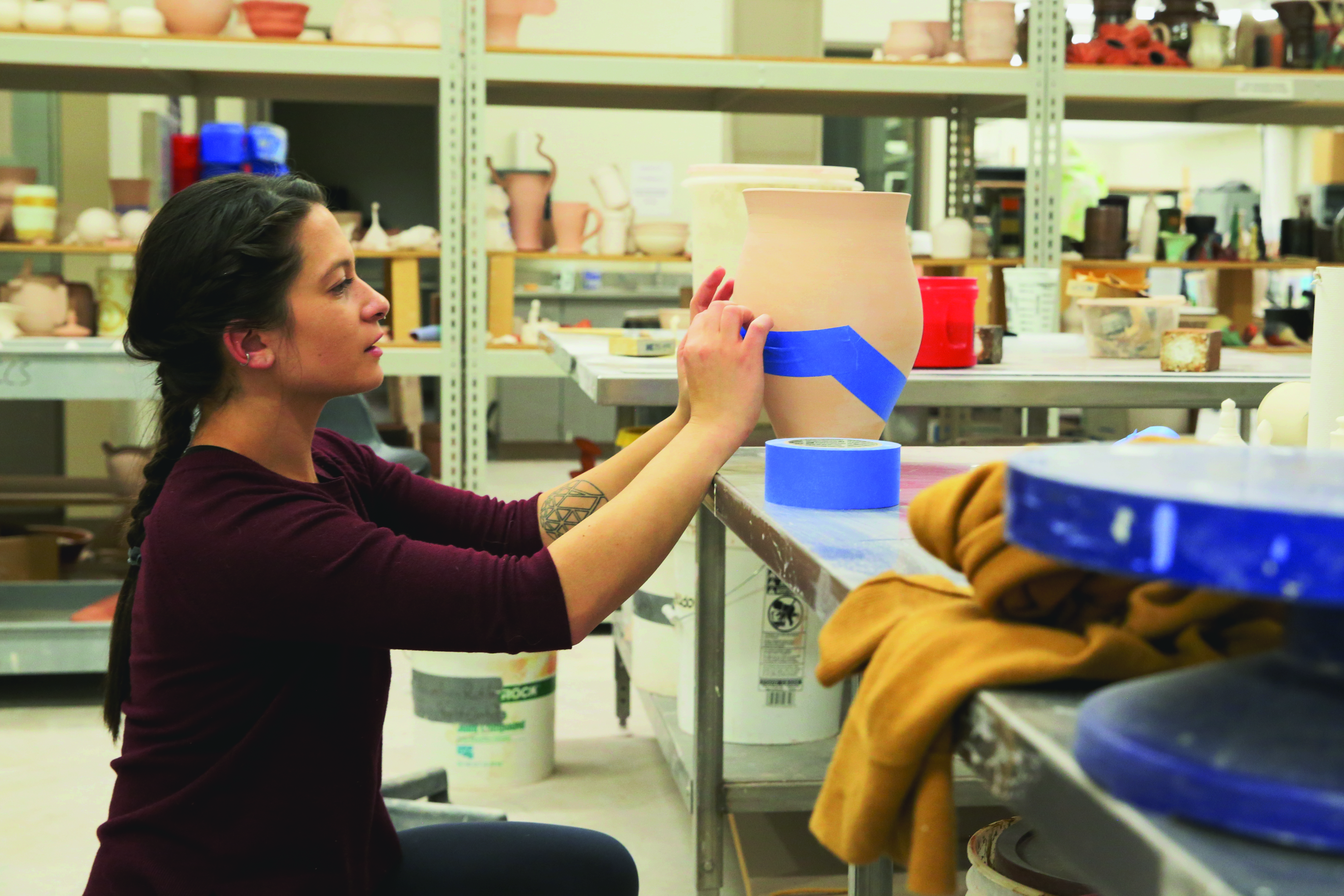Department of Art students will receive enhanced program fees following the UW Board of Trustees’ approval of a plan to institute cost-based fees for academic programs. This is part of the new fee structure that was introduced to enhance advising, career preparation and other student services.
The board voted on Nov. 16 in favor of the program fees proposal, crafted by a task force appointed by President Laurie Nichols and supported by the Associated Students of the Univeristy of Wyoing. The fees will go into effect in the 2018-19 academic year.
“It’s been drafted and put forward through [the] past few years, and students have been part of the conversation,” Art Department Head Ricki Klages said. “They have unanimously approved this decision as well. This is going to be a big change for the Art department.”
It will be $25 per credit hour for any art, music or theater and dance class. These program fees are paid when students sign up for classes in the visual and performing arts, in order to pay for the materials and equipment used in classes.
“Instead of students having to provide us checks in multiple situations, this new fee structure is going to allow us to offer students a very specific fee for all of the art classes and they will be able to actually use that fee to help support the materials that they would normally had to buy,” Klages said.
Revenues from the program fees will cover essential program supplies and materials, based on the varying costs of those programs. Ultimately, the fees are expected to boost retention and career readiness for UW students.
“This will provide equipment replace, update and repair costs,” Klages said. “For instance, the music department need to upgrade pianos, provide materials for plays and many other instrument upgrades, this will provide the money to keep thing[s] going.”
The students will be able to see the cost of their fees prior to registration.
“This is something I think students in our department fully support and now they don’t have to go to cashier to buy material cards,” Klages said. “Every student will be able to see what the cost will be prior to registration per semester. They would pay more, but they do anyways, it’s just not going to be separate checks from the tuition.”
Former music major and recent graduate Codey Hansen said, “I think visual and performing arts students usually have to buy lots of materials. Also, I know that music majors use lots of musical instruments available in the department.”
These program fees will be based upon the cost of individual academic programs. Those fees range from an additional $3 per credit hour for some non-science courses in the College of Arts and Sciences to $25 per credit hour in the College of Engineering and Applied Science, and for classes in the visual and performing arts.
“We do use lab equipment, but I don’t know whether this is a reasonable fee for Engineering students, because we already pay a separate engineering fee,” Civil Engineering graduate Shamila Rajeev said.
According to the University website, total revenue from the program fees is estimated at $4.5 million annually. Of that, $1.3 million will go to enhance advising, student success services and career preparation. The remaining $3.2 million will go to support specific academic programs, including $1.8 million to replace revenues from existing fees. None of the revenues will go toward permanent faculty salaries or research support.



